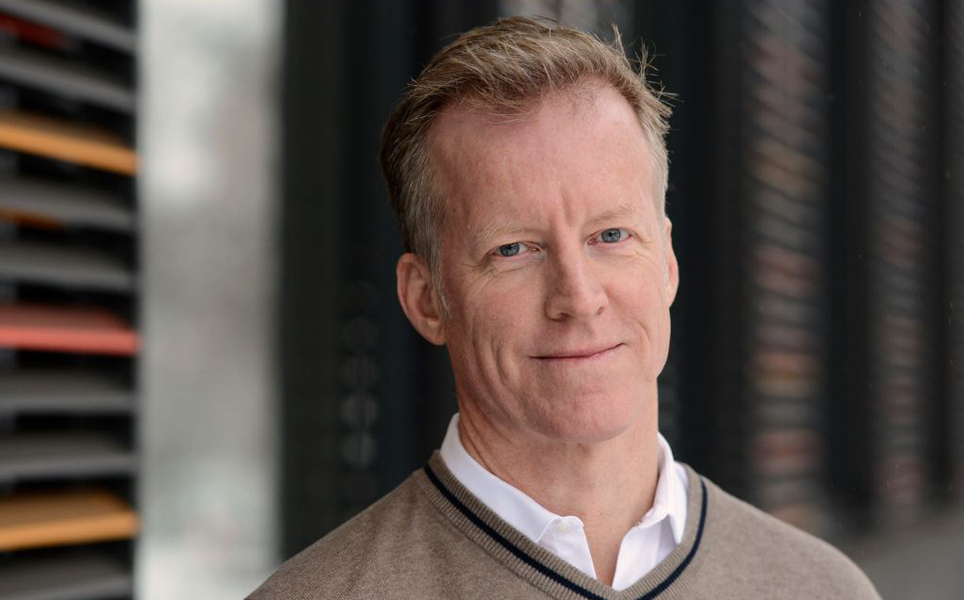
#Womeninscience: The work of Curt Rice in promoting gender equality and diversity
Curt Rice
President, Oslo Metropolitan University and Head of Norway’s Committee on Gender Balance and Diversity in Research
The Committee for Gender Balance and Diversity in Research
I work to promote gender equality and diversity both as the leader of the Committee for Gender Balance and Diversity in research (KIF), and as the President of Oslo Metropolitan University.
The KIF committee provides support and recommendations on measures contributing to gender balance and diversity in the Norwegian research sector. In recent years, KIF has also worked to promote ethnic diversity among academic staff; it works with gender and diversity perspectives in research.

How the Committee works
I believe that action to promote gender equality should be based on current research, and I write about such research in my blog. The KIF committee disseminates research and knowledge in the field of gender balance and diversity through our web pages and on social media.
We meet the management of various institutions to discuss their work with gender balance and diversity issues. We arrange seminars to discuss how laws and regulations are formulated and assess how they will affect gender balance and diversity. Recently, I teamed up with the Chief Executive of the Research Council to urge the Ministry of Education and Research to address gender in the EU programme Horizon Europe. In 2018 the Committee gave recommendations and promoted national action to combat sexual harassment in higher education and research.
Inequality in the academy
The global academy often has more male than female employees. Assuming that intelligence is distributed across the entire population, this is a tragedy for science because it means we’re missing out on employing talented women.
Hiring, promoting, evaluating our peers’ submissions to journals, awarding grant monies, giving grades to students and selecting students for advanced programs all depend on the capacity to identify quality. Yet when research on decision-making processes reveals pervasive bias, it’s only reasonable to expect that our decisions in academic contexts are also biased. Of course, we have a hard time believing that. We want to trust that academia is a meritocracy; we’re convinced that we know quality when we see it, but do we? Fortunately, we don’t have to speculate. We’re starting to understand the role of bias in the evaluation of academic work.
Under-representation of women prize winners – how can we affect change?
The Nobel Prizes, which are prestigious awards covering many subject areas and which garner a lot of attention from the public outside the research sector, have poor statistics when it comes to female prize winners.
I was invited by the Nobel Foundation to give a presentation to all the Nobel committees on gender equality, why it is important and what can be done. An extreme solution would be to say that all the Nobel Prizes in the next 10 years must go to women.
That would send a powerful signal! However, I recommend starting with a more moderate solution. The members of the committees at the Royal Swedish Academy of Sciences, the Swedish Academy, the Nobel Assembly at the Karolinska Institute and the Norwegian Nobel Committee also have a right to nominate candidates for the Nobel Prizes.
However, this right is hardly ever used. Imagine if they seized this opportunity to nominate candidates in order to achieve gender balance – that would be something! I think the goal should be a gender-balanced short list. In other words, that the potential Nobel prize-winners who the committees are left to choose among are evenly distributed between women and men. If it’s between one woman and 19 men, it’s very likely that a man will win. On the other hand, if it’s between 10 women and 10 men, the decision as to who wins will seem much fairer.
Universities often have research or teaching prizes, or prizes in certain subjects. The awarders of prizes also need to take action. In mathematics, for example, the Fields Medal was awarded to a woman for the first time in 2014, and the Abel Prize has never been awarded to a woman. I believe it is important to have the best possible gender balance to encourage young women, who notice role models, or rather, the lack of role models. Nothing will change at the top level if prizes and awards at lower levels continue to favour men rather than women
Banner image credit: Benjamin A. Ward / OsloMet.
More #Womeninscience content
- #Womeninscience: Dr. Tiffany Schmidt
- #Womeninscience: Plugging the leaky pipeline, how can we retain more women in science?
- #Womeninscience: Dr. Keira Melican
- #Womeninscience: The decision of when to start a family
- #Womeninscience: Dr. Anja Godfrey
- #Womeninscience: Donna Strickland, winner of the 2018 Nobel Prize in Physics
- #Womeninscience: Dr. Olga Skiteva
- #Womeninscience: The under-representation of women in science
- #Womeninscience: Professor Gail McConnell
- #Womeninscience: Scientifica inspire students
Sign up to receive our latest news
Find out about Scientifica's latest product releases, company news, and developments through a range of news articles, customer interviews and product demonstration videos.

)